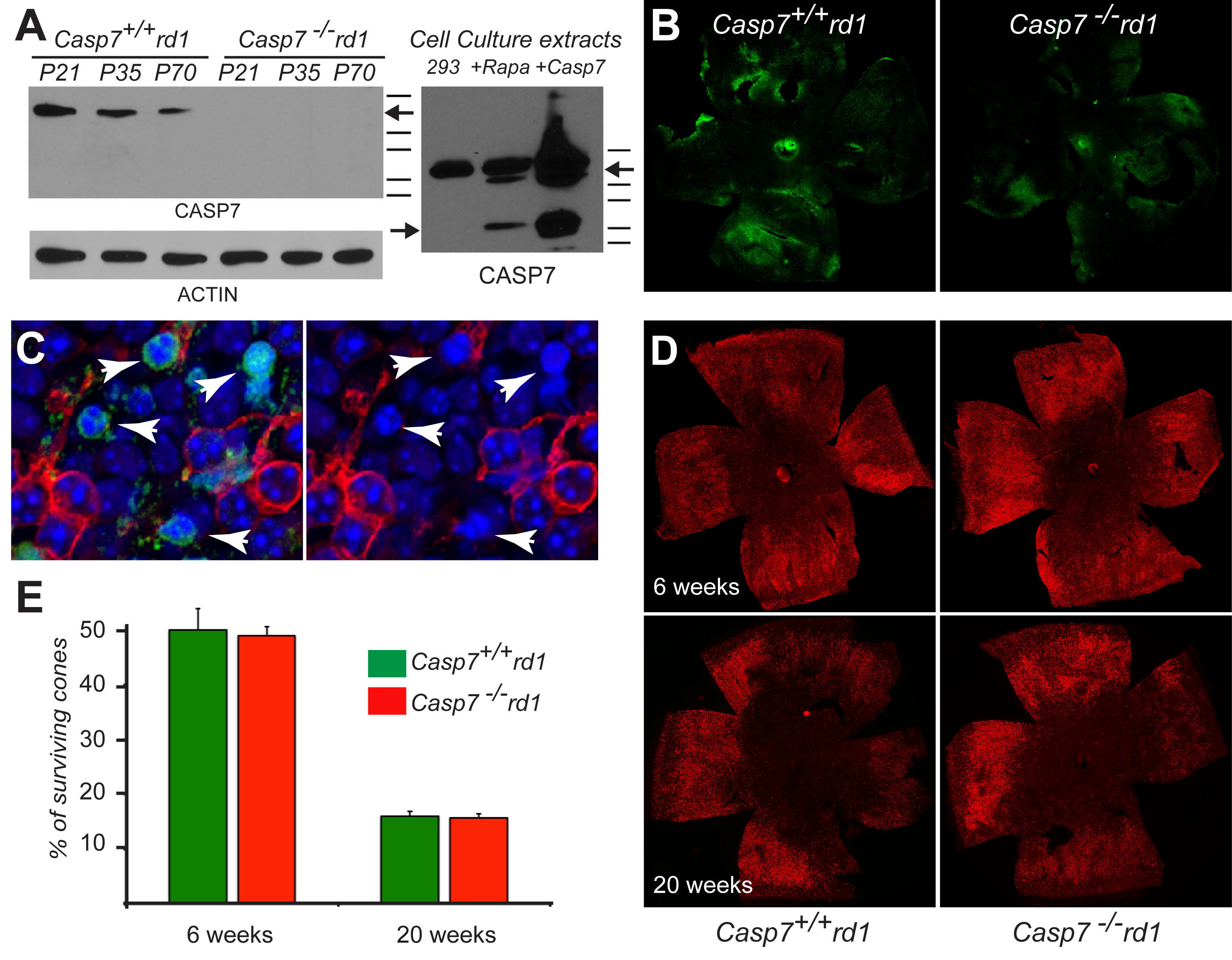Figure 3. Loss of Casp7 does not affect cone death in the rd1 mouse model of RP. A: Western blot analysis at postnatal (P) days 21, 35, and 70 with retinal extracts from Casp7+/+_rd1 and Casp7–/–_rd1 mice showing on the left no cleaved CASP7 protein in Casp7+/+_rd1 mice, a decline in the CASP7 protein over time, consistent with its enrichment in cones, and a lack of detectable CASP7 protein
in Casp7–/–_rd1 mice. To the right, the western blot analysis with protein extracts from HEK293 cells show cleavage of the CASP7 protein
after rapamycin treatment or overexpression of Casp7, indicating that the antibody is able to recognize the cleaved product and that dimerization by overexpression is sufficient
to activate CASP7 (the lines on the right of both western blots indicate molecular weight markers in kDa; starting from the
top line, their respective sizes are 37, 25, 20, 15, 10; arrows on right side of the western blot point to pro-CASP7 while
the arrow on the left of the western blot points to the cleaved CASP7 product). B: Immunofluorescence on retinal flat mounts to detect active CASP7 (the green signal indicates the fluorescein isothiocyanate
(FITC)–labeled CASP7 activity peptide) in the Casp7+/+_rd1 and Casp7–/–_rd1 mice. Because the FITC signal is still present in Casp7–/_–rd1 mice, the peptide is likely cross-reacting. C: Higher magnification of the assay in (B) showing that cone cells strongly labeled by the FITC CASP7 activity peptide (arrowheads) tend to have pyknotic nuclei and
less cone arrestin immunoreactivity (red signal), suggesting that the peptide was labeling dying cones (blue: nuclear 4´,6-diamidino-2-phenylindole
[DAPI]). D: Examples of retinal flat mounts of Casp7+/+_rd1 and Casp7–/–_rd1 mice stained for cone arrestin (red signal) expression at 6 and 20 weeks of age. E: Quantification of cone survival at 6 and 20 weeks of age showed no statistically significant improvement in cone survival
upon loss of Caspase-7 in rd1 mice. (n=6 per genotype and time point; Error bars: SEM).

 Figure 3 of
Venkatesh, Mol Vis 2017; 23:944-951.
Figure 3 of
Venkatesh, Mol Vis 2017; 23:944-951.  Figure 3 of
Venkatesh, Mol Vis 2017; 23:944-951.
Figure 3 of
Venkatesh, Mol Vis 2017; 23:944-951. 